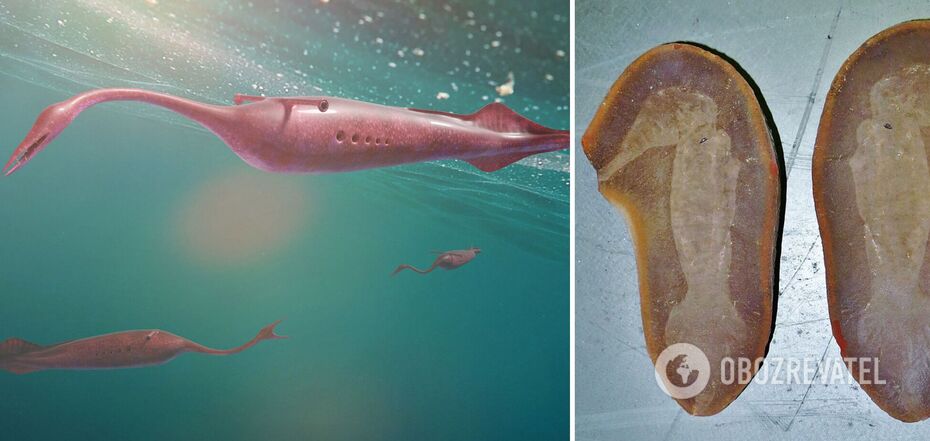Life
Strange prehistoric monster was mistakenly considered a lost link in evolution: what scientists have learned
Scientists have apparently managed to unravel the mystery of the mysterious animal monster Tullimonstrum gregarium, which existed on Earth about 300 million years ago. Its amazing anatomy had stumped scientists for 70 years.
The new study was reported in the journal Palaeontology. Previously, there was a debate about whether Tullimonstrum was a vertebrate or not. Some scientists even believed that it was a lost link in the evolution between invertebrates and vertebrates. However, now it seems that this debate can be put to rest.
A 300 million-year-old monster
The fossilised remains of a then-unknown creature were first discovered by Francis Tully in the 1950s when he was hunting for fossils. The discovery was made in a place known as Mazon Creek Lagerstätte in the US state of Illinois.
This 15-centimetre-long sea monster was a mystery to scientists, who had been arguing for 70 years about its place in the classification of living things because the Tully monster was soft-bodied.
After decades of research, in 2016, a group of American scientists declared that Tullimonstrum was a vertebrate animal similar to cyclostomes (jawless fish such as lamprey). In their opinion, it was also a lost link in the evolutionary history of early vertebrates.
There was a lot of controversy around this theory, but no one has been able to put it to rest.
3D study reveals the truth
Now, a team of scientists from Japan, who conducted a 3D study of more than 150 fossilised Tally monsters and more than 70 other diverse animal fossils from Mazon Creek, believe they have found the definitive answer, which strongly suggests that he was not a vertebrate.
"We believe that the mystery of an invertebrate or a vertebrate animal has been solved," said Tomoyuki Mikami, a researcher at the National Museum of Nature and Science (Japan).
He believes that the hypothesis of a vertebrate monster, Tally, is "untenable".
"The most important point is that the Tally monster had a segmentation in the head area that extended from the body. This characteristic is not known in any vertebrate lineage, which indicates a non-vertebrate relationship," the scientist stressed.
However, after solving one problem, the scientists faced another: now they need to understand which group of organisms the monster belongs to.
So far, they assume that it is a chordate invertebrate (like fish-like animals known as lanceolates) or some kind of protostome (a diverse group of animals that includes, for example, insects, roundworms, earthworms, and snails) with a radically altered morphology.
Earlier, OBOZREVATEL reported that scientists had discovered the skeleton of a previously unknown species of winged creature, which is 52 million years old.
Subscribe to OBOZREVATEL's Telegram and Viber channels to keep up with the latest news.



























